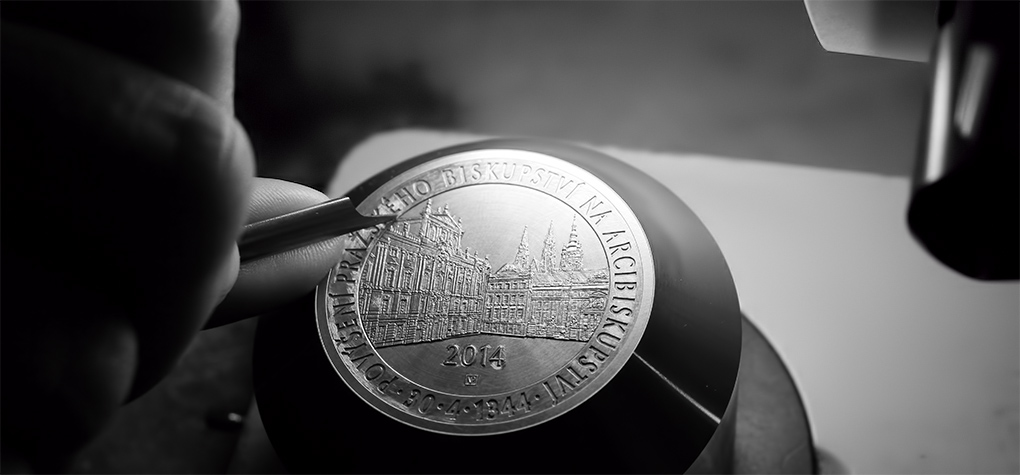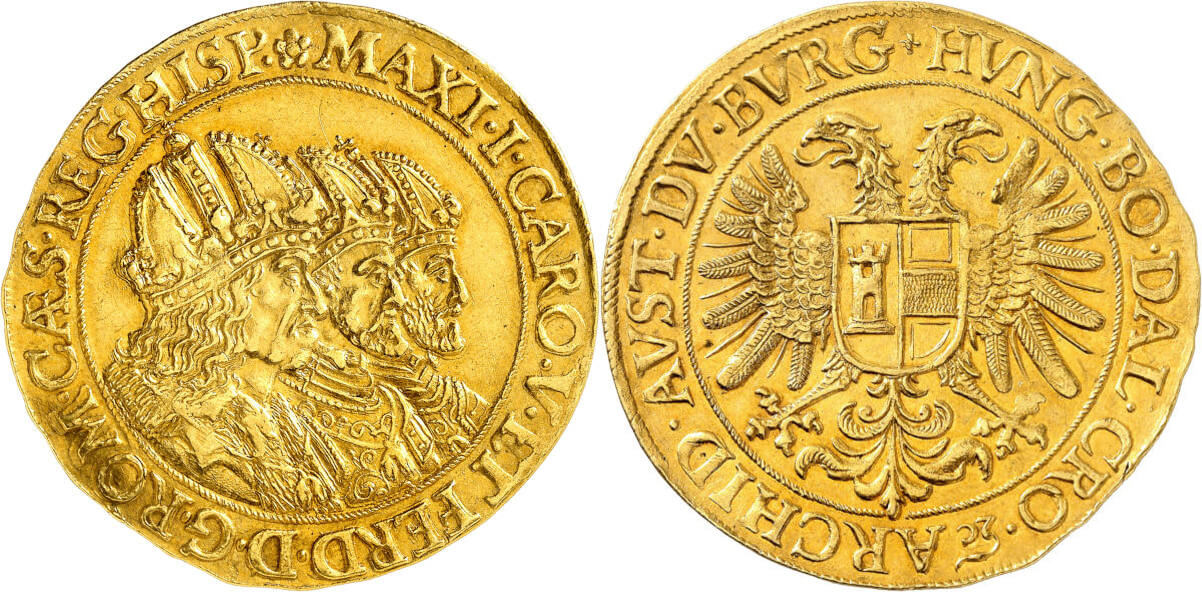Free Tips To Minting Czechoslovakia Medals
Wiki Article
What Is The Purpose Of A Plaster Model Scanned To Create A Digital 3d Model For Gold Coins And Medals?
The process employs special equipment to digitize the maquette and capture its dimensions. This digital replica serves many functions during the process of production.
3D Scanning High-resolution 3D scanners are used to capture all the dimension and details of the model. The scanners employ various techniques like laser scanning and structured light to record precise dimensions and geometrical shapes.
Capturing surface information- The scan emits light beams or lasers onto the plaster model. The scanner records the reflections and distortions. This information is then used to construct models.
Data Collection - When the scanner is moved across the model, it collects an enormous amount of data, creating a digital version of the model's geometry contours and particulars.
Conversion into a 3D Model. The collected information is processed using special software which reconstructs it into a 3D digital version. The model is based on the physical dimensions and features of the maquette.
There are a variety of reasons to make 3D digital models
Digital 3D models can be used to recreate the exact details and dimensions of a physical model. This ensures that the final gold coins and medals are designed to match the design intended.
Digital models may be easily altered or refined. Designers can alter the 3D model, without changing the original plaster maquette. This permits iterative corrections or improvements.
Compatibility with Manufacturing ProcessesCompatibility with Manufacturing Processes Digital 3D models are compatible with a variety of manufacturing techniques including CNC machining or 3D printing which makes it easier to create molds or dies for mass production.
Archiving and Documentation - Digital 3D models function as an archived document of the design. You can save them digitally as a reference for the future, for reproductions, or to document the history of the design.
By scanning the plaster model and creating a digital 3D model that designers and manufacturers can improve the efficiency of their production to ensure accuracy when replicating, and leverage advanced manufacturing technologies for creating gold medals or coins that are precise and faithful to the original design. See the top Scanning and 3D Modeling Czechoslovakia gold coins website recommendations. including st gaudens double eagle, gold medal gymnasts, gold bullion coins, price of gold 1 oz today, coin buy gold, american eagle gold coin price, buy gold bars from bank, gold coin store near me, gold eagle coin, silver and gold buyer near me and more.

How Do You Use Laser Technology Utilized To Polish The Surface Of The Master Hub Or Die For Gold Medals Or Coins?
This process makes use of laser technology to refine and make exact details on the dies used to create gold coins or other medals. Here's the process of surface refinement using laser technology.
After initial processing, laser technology can be utilized to improve the surface of dies or hubs. It assists in smoothing out flaws, removing burrs or small imperfections in the surface.
Detail Enhancement-
Laser ablation, or laser engraving techniques, are employed to enhance or add aspects of the hub master and die. Lasers can precisely etch and remove materials to create intricate lines patterns, textures, or intricate patterns that might be difficult to achieve using traditional machine.
Microstructuring-
Laser microstructuring is the art of making of microstructures or patterns on die surfaces. This technique is used to create unique textures or patterns which increase the aesthetic value or security characteristics of coins or medals.
Surface Hardening Treatment or Hardening
Laser technology can be utilized in some cases to treat or to harden master hubs or dies. This process improves the durability and wear resistance that ensures the longevity of the process of striking.
Precision Alterations
Laser technology permits precise corrections and adjustments to the die or master hub, with no impact on the overall geometry. This allows for adjustments to the surface to eliminate any imperfections, defects, or flaws that could impact on the overall quality and worth of the coins or awards struck.
Controlled Material Removing
Laser ablation eliminates materials with precision, especially when fine details must be defined or adjusted. The material is removed by contact, thus preserving the integrity surrounding the area.
Laser technology used for the improvement of surfaces and enhancement of details on masters or dies hubs will lead to greater accuracy, finer detailing and a better quality surface. This allows for the precise manipulation and enhancement of surface properties, which is essential to create high-quality coins or gold-plated medals. Read the most popular laser processing Czechoslovakia gold coins blog recommendations. including american eagle gold coin, american eagle gold coin 1 oz, kruger rand, gold sovereign, gold biscuit buy, 1 ounce of silver, coins and gold, today's 1 oz gold coin price, 1 ounce gold bullion, american gold eagle 1 oz and more.
In What Ways Can Gold Coins Or Medals Undergo Coating Processes To Shield The Metal?
Gold coins or medals can undergo coating treatments for different reasons, such as protection, enhancement of appearance or to create particular aesthetic results. Below are various coating processes that are used to protect Coatingsto
Clear Protective (Varies). A protective clear coating such as lacquer can be used to protect surfaces from corrosion. This coating protects and preserves the original appearance of the coin or medal.
Improvement in appearance
Gold plating, or gildingA surface of a gold-plated coin or medal may be coated with a fine layer of gold. This can enhance the appearance of the medal or coin and gives the appearance of a more polished and a luxurious appearance.
Aesthetic Effects
Patina or antique finishes are created using chemical treatments or special coats. This creates a aged or oxidized appearance to the surface. It adds the character and depth of your design.
Colorization / Coloring - In some instances the color of certain areas on a coin, medal, or any other object is accomplished by using specific coatings and enamels. The aim is to enhance the design element as well as to create contrast and add visual appeal.
Anti-Tarnish Coatings-
Anti-Tarnish Solutions - For coins or medals with intricate designs or surfaces susceptible to tarnishing, anti-tarnish coats or solutions might be applied. The coatings prevent the metal's surface from oxidizing or discoloring with time.
Specialized Coatings or Authentication for Security-
UV-Reactive or Luminescent CoatingsSome medals or coins may contain specialized coatings that react to UV light, revealing secret or encrypted parts for authentication or security purposes.
Selective Coatings that have Contrast
Selective Coating Removal: In some cases coatings are removed selectively from specific areas of the medal or coin to make a contrast between polished and coated surfaces, highlighting the design elements.
Each coating has a purpose. It may be to shield the metal from damage or to enhance its appearance. It could also add security features. These coatings have a significant impact on the appearance and durability of gold-plated coins and medals which increases their value. Have a look at the top rated coating Prague Mint gold coins more info. including gold & silver bullion, 50 dollar gold piece, 1 oz gold, silver price in dollar, old silver coin, canadian gold maple leaf, gold bullion price today, gold dollar coin 2000, 2000 dollar coin, 2000 sacagawea and more.

How Do You Feed Blanks Of Gold Into Coin Presses?
During the coining process the gold blanks are placed in coin presses under intense pressure. Then, they are stamped to create completed coins or medals. Here is an outline of how to load blanks.
A feeder system is attached to the coin press. The system is loaded with gold blanks that have been prepared and checked for quality. This feeder system is accountable for maintaining an uninterrupted flow of blanks into the coin press.
Feeding Blanks in the Press
The feeder system guides each blank to the strike zone of the coin presses. This ensures accurate positioning of each blank for stamping.
Alignment and Positioning
The blanks inside the press chamber are placed, aligned, and oriented perfectly for the stamping.
Strumping in High Pressure
The coin press applies an intense pressure on gold blanks by using a pair of dies--one stationary and the other moving. The stationary die has the negative image of the design of the coin, while the moving die is the hammer that strikes the blank.
The die that moves transfer the design of the blank to its surface with considerable force. Die presses the design to create the relief that is raised on the medal or coin.
Repeated Striking
To produce a more sharp image or more defined appearance, multiple strikes are often applied to better quality coins and medals, especially proof editions. Each strike enhances the fine details on the surface of the blank.
Collection and Ejection
The newly struck coins or medals will be removed and put in containers or trays when they've been struck. They are checked for quality control to ensure that designs stamped meet all standards and criteria.
Post-Processing-
The style of the medal or coin could require further processing, for example, edge lettering (either edge or reeding) or post-strike treatment.
Stamping under high pressure imparts the desired designs onto gold blanks, changing the coins into medals that are ready for circulation, collections or for commemoration. This process is extremely precise because any alterations in alignment or pressure can alter the appearance and performance of the end product. Follow the top minting Prague Mint gold coins blog examples. including $50 gold coin, double eagle coin, gold bullion coins, 1 ounce gold bullion, gold eagle, gold dollar, gold bullion bars for sale, american gold eagle 1 oz, small gold coins, ebay gold coins and more.
